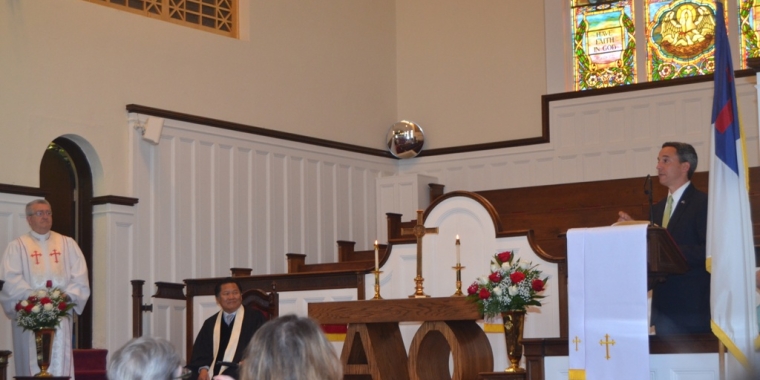From the Desk of Senator Jack Martins
Jack M. Martins
June 11, 2013
-
ISSUE:
- Local Government
- Water
-
COMMITTEE:
- Local Government
Slow and Steady
In Aesop’s fable, the Tortoise and the Hare we learn, “slow and steady wins the race.” Truthfully, many of us probably learned this first from an overconfident Bugs Bunny who challenged Cecil Turtle to a footrace. Who can forget his look-alike cousins who help the slow-talking tortoise outwit Bugs to win the race?
There’s something to be said about enlisting the help of others to steadily accomplish goals and this is true of my effort to protect Long Island’s drinking water. That’s why I’ve introduced legislation to create the Long Island Aquifer Commission.
By way of background, Long Island holds a somewhat unique distinction as a sole-source aquifer that is completely surrounded by saltwater. Aquifers are millennia old, underground sand and gravel formations that collect rainwater. Unlike New York City which transports its water in tunnels from upstate reservoirs, our freshwater comes from this groundwater supply sitting beneath us. Pumps then provide Nassau and Suffolk’s three million inhabitants with an incredible 375 million gallons per day! The aquifers are replenished by precipitation, so despite our desire for sunnier days, rain and snowfall are the welcome agents that bring in new freshwater.
In essence, we have a bubble of fresh water in an ocean of saltwater so we need to protect it, preserve it, and ensure that it’s there for our children and grandchildren. Life as we know it on our island would cease to exist should our fresh water disappear, not only for our own needs, but for the delicate balance of our local ecosystems, wetlands, and estuaries.
Today, many of our water districts and authorities face daily struggles against such problems as salt water intrusion at the saltwater/fresh water interface; plumes of contaminants that are the byproduct of Long Island’s bygone manufacturing days; and high water tables that facilitate flooding in many of our south shore communities. Unfortunately, the cost of dealing with these challenges is borne by our water districts and authorities and obviously the local taxpayers and water ratepayers. The State has historically provided help and regulation through the Departments of Environmental Conservation and Health, but a local Long Island Aquifer Commission tasked with marshaling and investing state resources is imperative.
Our Long Island aquifer is a miracle of nature and by any definition a vital state resource. But our history in manufacturing and the effects of 3 million people living here have taken their toll. The delicate ecosystems of Long Island’s wetlands are being threatened including elevated nitrogen levels of the Great South Bay. Beach closings, algae blooms and diminished wildlife simply cannot be ignored.
My goal is to gather experts together to finally create and implement a cohesive approach to water usage that will ensure the long-term viability of our aquifer and better preserve our ecosystems. Members of the commission would draw not only from their mutual experience but also to a greater degree on state resources. In short, it’s time we see a state commitment to the already, over-stretched local taxpayers who have shouldered the burden for so long.
Aesop and Bugs were on to something: working together, slow and steady, we’ll ensure that our aquifer, our environment, and our access to clean water are protected.
Share this Article or Press Release
Newsroom
Go to NewsroomFrom the Desk of Senator Jack M. Martins
June 4, 2015


